The Best DIY Beeswax and Shea Butter Body Cream Recipe for Dry Skin
This rich and nourishing body cream combines beeswax, shea butter, and apricot kernel oil to deeply moisturize dry skin, leaving it soft, smooth, and beautifully scented with your favorite fragrance. The best part? It’s surprisingly easy to make and customize the fragrance and ingredients to suit your preferences.
The blend of beeswax and shea butter creates a thick cream that absorbs easily into the skin without leaving any greasy residue, making it perfect for use all over your body. It’s a fantastic addition to your skincare routine—why not try it and create your luxurious skincare at home?
Nourishing Beeswax and Shea Butter Body Cream
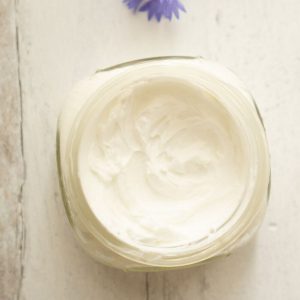
Equipment
- Shallow mason jar or body cream jar
- Pyrex measuring cups or other microwave safe containers
Ingredients
- 140 grams distilled water
- 16 grams almond oil (available here from Nurture Soap)
- 8 grams shea butter (get it in a bar from here)
- 8 grams beeswax (pellets are the easiest to work with)
- 14 grams stearic acid (get it here)
- 14 grams polawax (available online)
- 2 grams phenonip (order here)
- 2 grams fragrance of your choice (Nurture Soap and Brambleberry are great sources of fragrance oils)
Save This Recipe
You'll join my email list which you will love. And if you don't, unsubscribe in one click. ❤️
Instructions
- Prepare. Measure all the ingredients using a digital scale for accuracy. Then, sterilize your stick blender and the container you will use for the body cream by washing them in hot, soapy water and then rinsing well. Allow them to air dry or dry with a clean towel.
- Heating the ingredients. Place the stearic acid, polawax, beeswax, shea butter, and apricot kernel oil (or almond oil, if using) in a microwave-safe container. Then, heat the mixture in the microwave until thoroughly melted, reaching approximately 170°F (77°C). In a separate microwave-safe container, heat the distilled water until it also reaches 170°F (77°C). Use a thermometer to make sure both the oil mixture and the water are at the same temperature before proceeding to the next step.

- Blending the mixture. Slowly pour the melted oils into the hot water while blending with a stick blender. Blend for 20 seconds, then rest for 20 seconds, and repeat until the mixture thickens. Initially, the mixture will appear bubbly and fluid. As it cools, it will start to thicken and change texture. Continue blending until the mixture becomes a thick, creamy consistency resembling body cream.

- Adding preservatives and fragrance. Once the desired texture is achieved, add the preservative (Phenonip) and the fragrance of your choice. Briefly blend with the stick blender to evenly distribute the preservative and fragrance throughout the cream.
- Storing the cream. Transfer the cream into a very clean, sterilized container, making sure there are no contaminants. Store in a cool, dark place. The cream should remain stable for at least 6 months.
- Stovetop option. Alternatively, you can heat the ingredients in separate pots on the stovetop. Maintain continuous stirring and even heating to avoid hotspots, and make sure both the oils and water reach the same temperature before blending.
Video
Notes
More Tips:
Due to the absence of water-based preservatives in this cream, maintaining cleanliness is important. Wash and sterilize your tools and containers with hot, soapy water, and allow them to air dry to prevent bacteria contamination.
To make sure that everything that comes into contact with the body cream is disinfected, it’s best to dip them in a 10% bleach solution. However, I personally only do this when making creams or lotions for sale. For personal use, washing in hot, soapy water has always been sufficient.
If you don’t want to deal with emulsifiers or preservatives, you can make a balm-like cream made out of just oils. This type of cream has a heavier feel and is best suited for hands or very dry skin. You can find the recipe for it here.
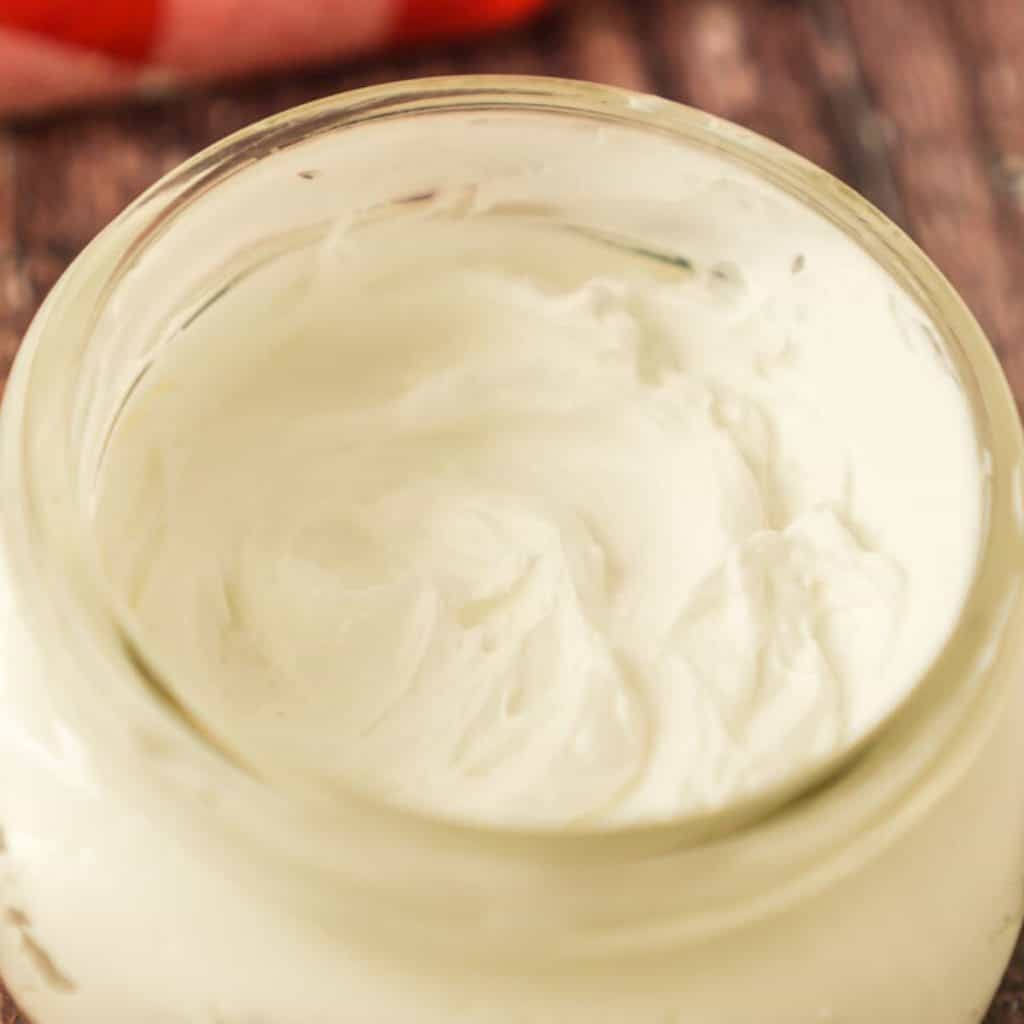
Key Ingredients and Tools
When making this body cream, you’ll need a few things to get the best results. These key items include:
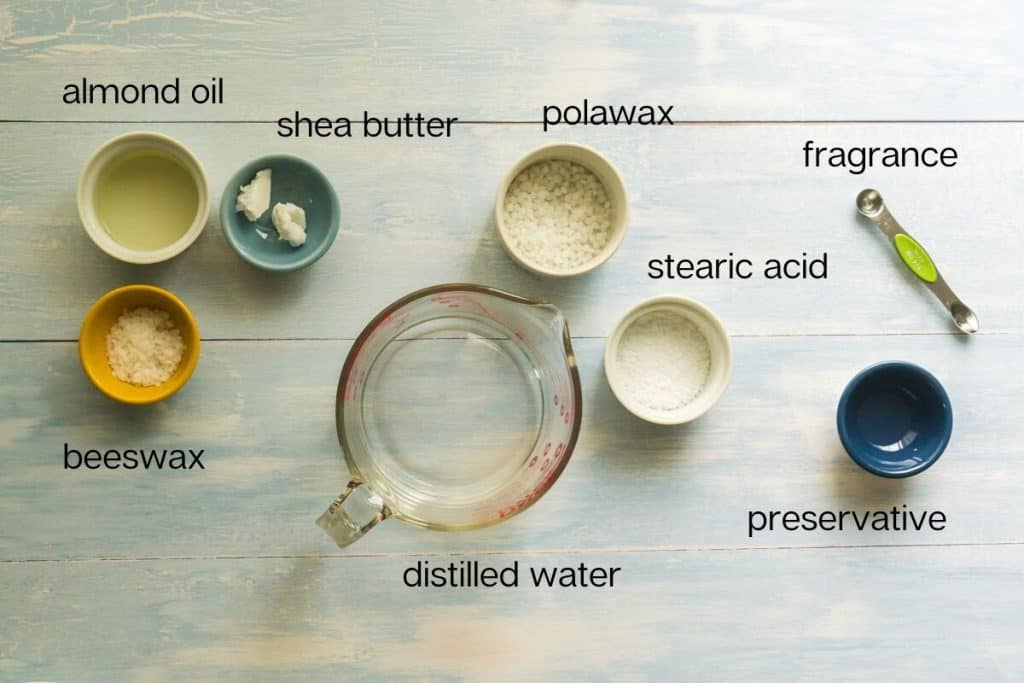
- Beeswax: This ingredient gives the cream its thickness and protective qualities. You can find beeswax in most craft stores’ skincare or candle-making section or online. If you’re looking to explore more ways to use beeswax beyond this nourishing body cream, be sure to check out these things to make with beeswax.
- Polawax: This is an emulsifying wax that helps blend the oils and water together into a smooth, stable cream. It’s not commonly found in grocery stores, so you may need to order it online or from a specialty soap-making supplier.
- Stearic Acid: This thickens the cream and gives it a more creamy texture. You can usually find it in health food stores or online, and it’s essential for achieving the right consistency.
- Phenonip: This preservative helps extend the shelf life of your body cream by preventing the growth of bacteria and mold. It’s important to keep your cream safe to use, especially if you plan to store it for a while.
- Stick Blender: A stick blender is essential for thoroughly blending the oils and water to create a smooth, creamy texture. It’s much easier to use than a regular blender and helps avoid lumps or separation.
These tools and ingredients will make the process smoother and ensure you create a high-quality body cream.
You can swap out some of the key ingredients in this recipe with the following substitutions:
- Almond Oil: You can use jojoba, olive, or coconut oil for a different texture and feel.
- Polawax: Emulsifying wax NF can be used as an alternative.
- Phenonip: If needed, you can opt for another broad-spectrum preservative like Optiphen or Germaben II.
- Apricot Kernel Oil: You can replace it with grapeseed oil or sweet almond oil for similar moisturizing properties.
Just remember that using substitutes may slightly change the texture and effectiveness of the final product, but it’s worth experimenting to see what works best for you.
Troubleshooting and Help
I wouldn’t recommend skipping the preservative, even for a small batch. Without it, water-based products like this cream can develop bacteria and mold pretty quickly, even if you’re careful. It’s best to include it to keep your cream safe to use.
You can definitely use a regular blender, but a stick blender makes it easier to blend everything right in the container you’re using. If you use a regular blender, just make sure to blend thoroughly and watch for any separation.
Absolutely! Sweet almond oil or even jojoba oil would work well as a substitute. Both are great for moisturizing and have a similar texture to apricot kernel oil.
If your cream is too thick, it might be because the oil and water temperatures weren’t close enough when you blended them. Try gently reheating the mixture and blending again. You can also add a little more distilled water to thin it out if needed.
Sure! If you want to add a little color, you can use a skin-safe mica powder. Just add a tiny bit at a time until you reach the desired shade. Remember, less is more!
If your beeswax didn’t fully melt, it could be because the temperature wasn’t high enough. Try reheating the mixture gently until the beeswax is completely melted, then blend again. Make sure all your ingredients are heated to the recommended temperature to ensure a smooth, lump-free cream. If you enjoy working with beeswax, you might also like trying your hand at soap-making with beeswax and honey, which creates a rich, creamy lather that’s perfect for dry skin.
Feel free to reach out if you have any more questions—I’m happy to help!
I hope you enjoy making and using this nourishing body cream as much as I do. It’s a simple, effective way to pamper your skin with trusted ingredients.
Whether you’re new to DIY skincare or a seasoned pro, this recipe is easy to follow and customizable to suit your preferences. Give it a try, and don’t hesitate to experiment with different oils or fragrances to make it truly your own!
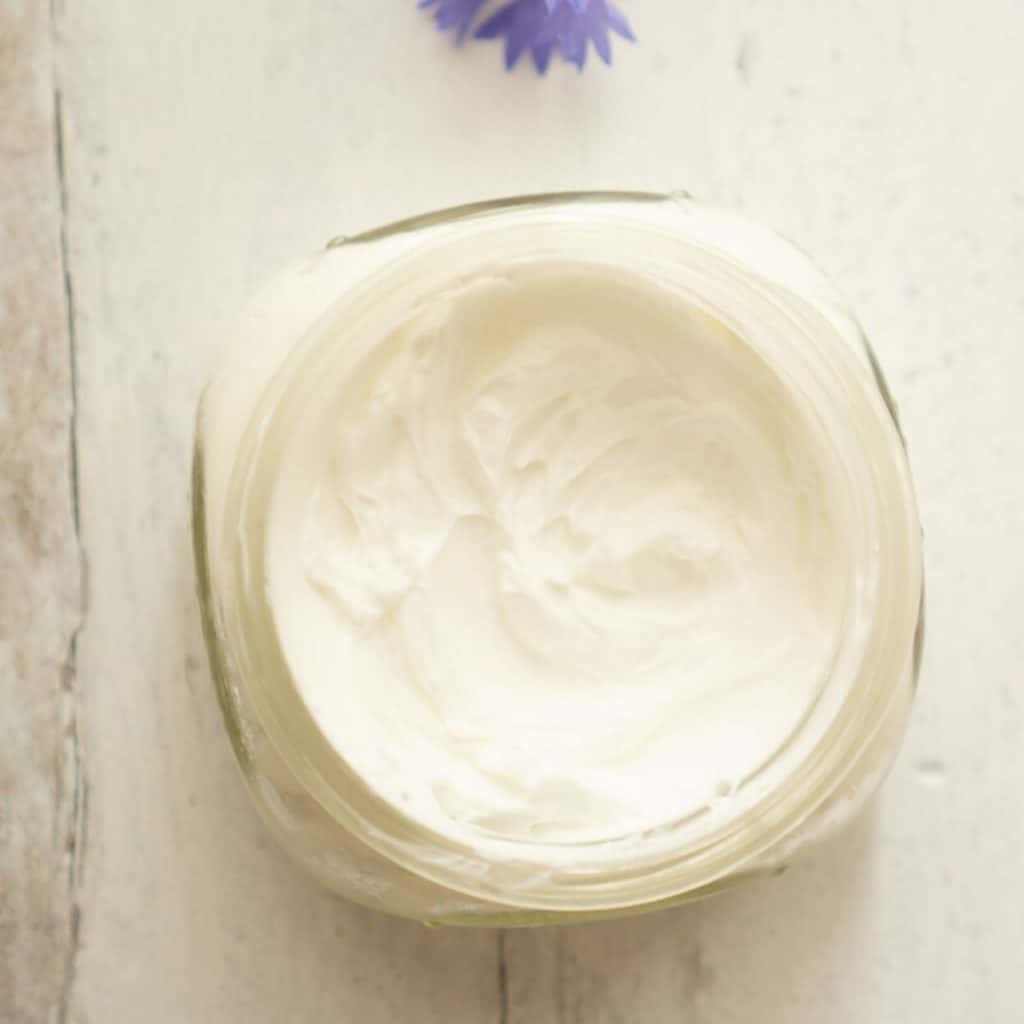
Love,



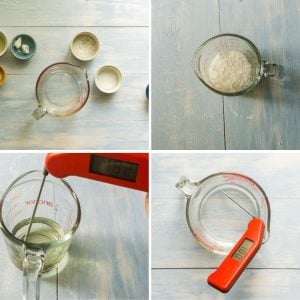
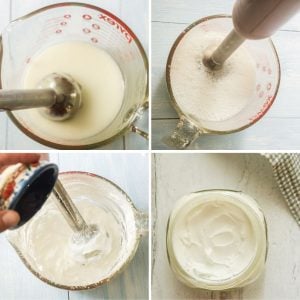









Hi Katie! Just made your recipe and it turned out fairly well for my try at body butter! My skin feels a little sticky after application. Almost a waxy feeling. Do you think I added to much beeswax or emulsifying wax? I’ve been searching everywhere for solution. Any suggestions? Perhaps decrease beeswax and increase shea butter??? Thanks so much- Courtney
Hello Katie! Thank you for all the amazing recipes, I love your website! I just had a couple of questions about this one. What is the function of the stearic acid? Also, can we use optiphen instead of phenonip?
Thank you! 🙂
hi umi, the stearic acid is another emulsifier help to the oil and water stay blended. and yes optiphen is perfect! 🙂